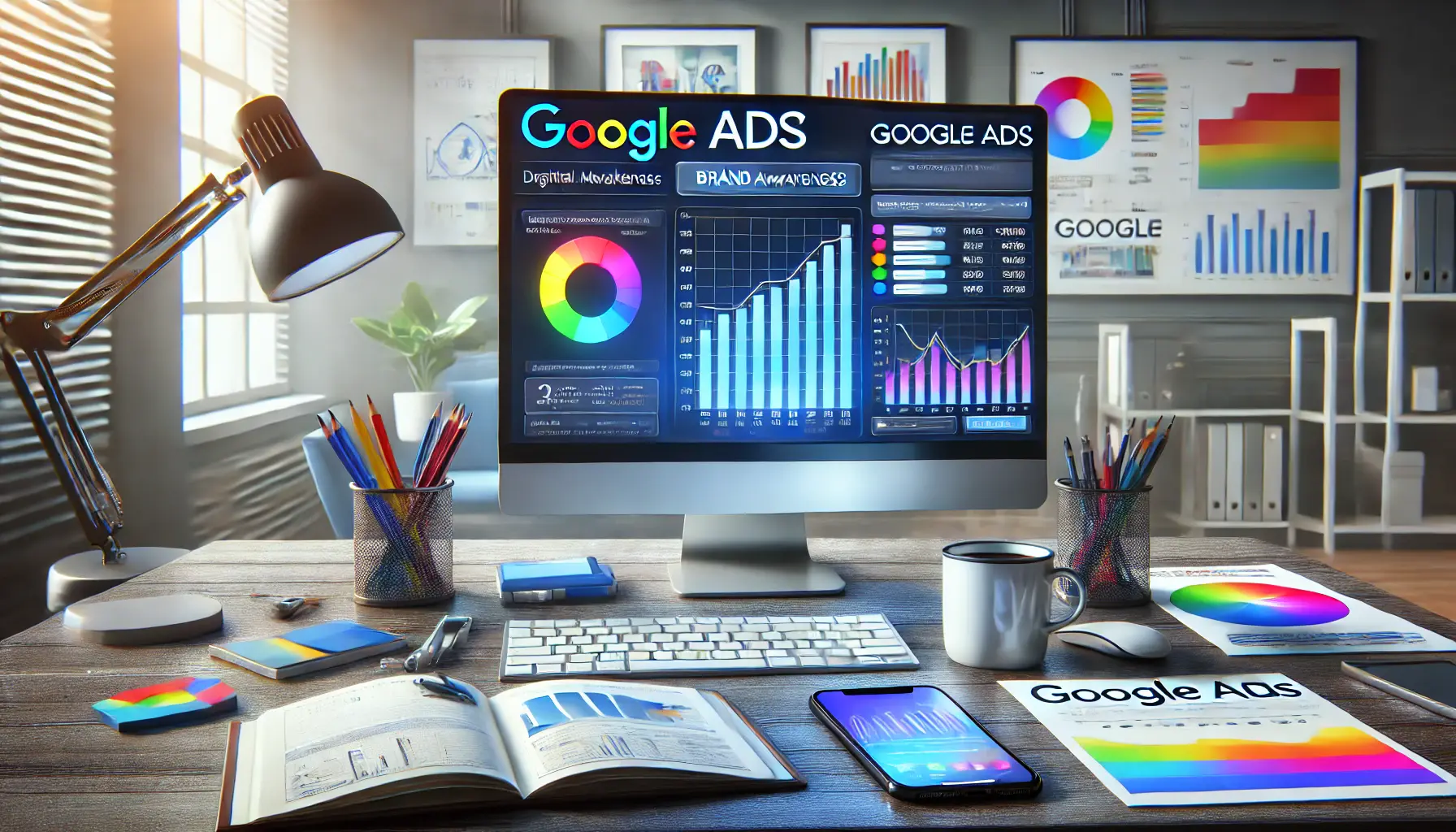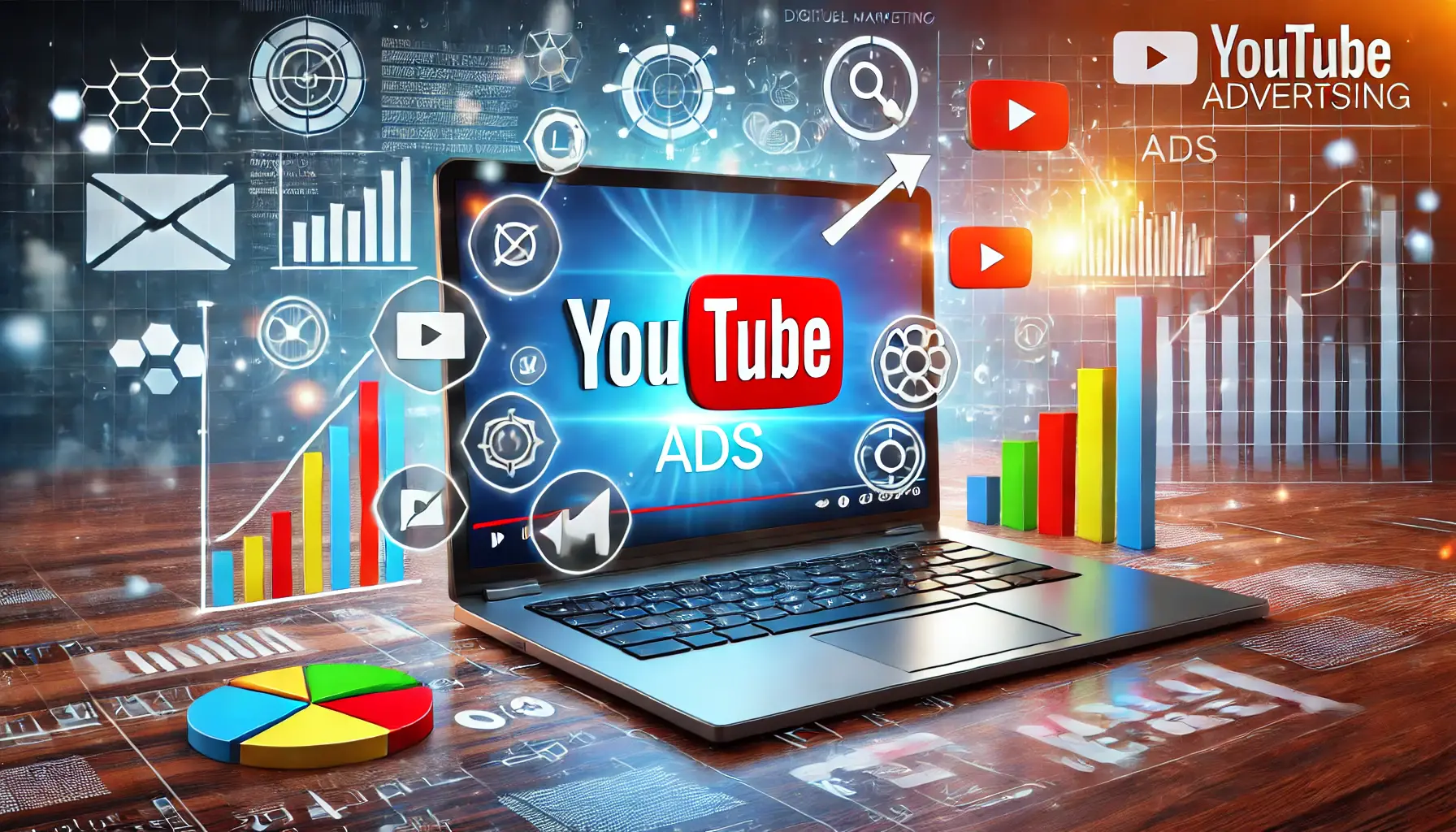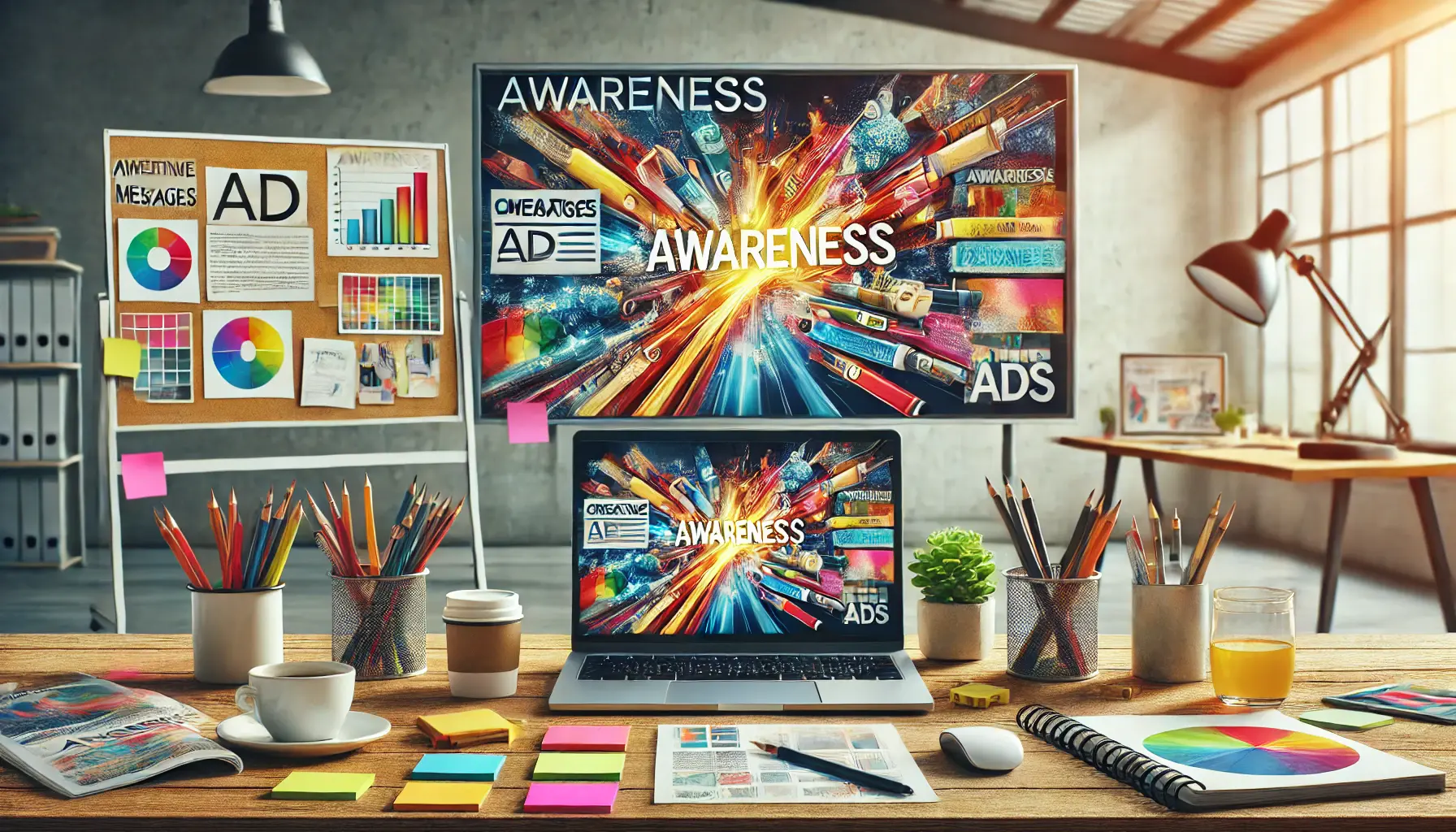Google Ads has become a cornerstone in digital marketing strategies, especially when it comes to boosting brand awareness.
In a world where online visibility is crucial for business success, understanding and leveraging Google Ads can be a game-changer.
This article delves into five key strategies to enhance awareness through Google Ads, offering insights and practical tips to maximize your campaign’s impact.
With the digital landscape constantly evolving, staying ahead in the competitive market requires not only creativity but also strategic planning.
Google Ads provides a platform to reach a vast audience, but it’s the mastery of certain strategies that turns views into valuable brand recognition.
Let’s explore these strategies to help your brand stand out and capture the attention it deserves.
- Understanding Your Audience and Targeting Precision
- Maximizing the Power of Video Advertising
- Exploring the Effectiveness of Local Campaigns
- Embracing the Power of Artificial Intelligence in Google Ads
- Enhancing Brand Awareness Through Creative Ad Design
- Mastering the Art of Ad Scheduling and Budget Allocation
- Maximizing Brand Awareness with Strategic Google Ads Implementation
- Google Ads Awareness Boosting FAQs
Understanding Your Audience and Targeting Precision
One of the first steps in any successful Google Ads campaign is to deeply understand your target audience.
This involves identifying not just demographic details like age, gender, and location, but also understanding their interests, behaviors, and search patterns.
Google Ads offers advanced targeting options that allow you to tailor your ads to the specific needs and preferences of your audience.
By utilizing tools such as audience segmentation and in-market audiences, you can ensure that your ads are being shown to people who are most likely to be interested in your products or services.
This precision in targeting not only increases the effectiveness of your ads but also ensures a higher return on investment (ROI).
- Segmenting your audience based on their online behavior and interests.
- Utilizing in-market audiences to target users who are actively researching products or services similar to yours.
- Adjusting your targeting based on performance data to continually refine your audience.
Key Point: Precision targeting in Google Ads is essential for reaching the right audience and maximizing campaign effectiveness.
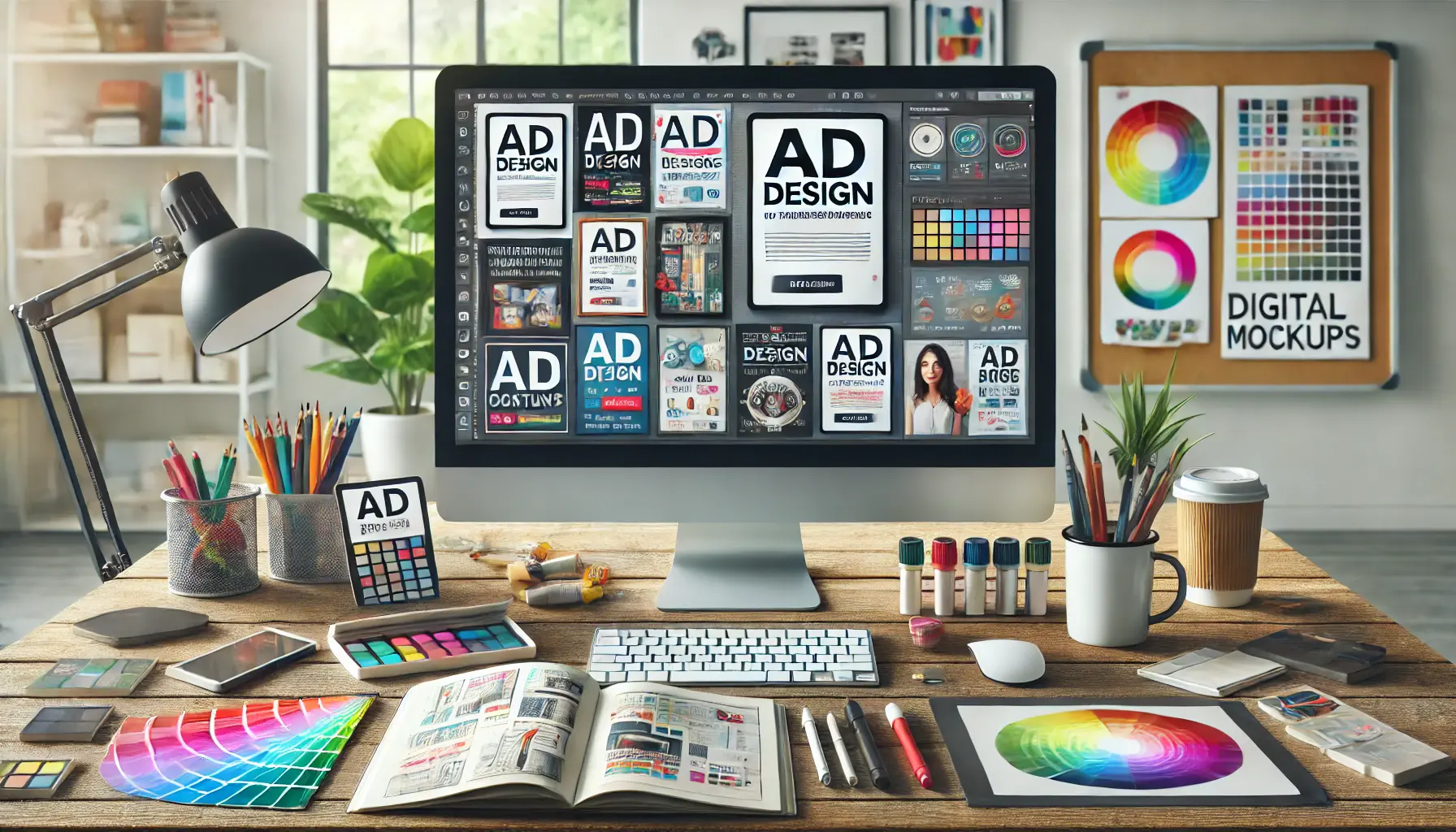
Digital workspace dedicated to crafting engaging and creative ad content.
Creating Compelling Ad Content
The content of your Google Ads plays a crucial role in capturing the attention of your audience.
It’s not just about what you say, but how you say it.
Your ad copy should be clear, engaging, and aligned with the interests of your target audience.
It should also include a strong call-to-action (CTA) that encourages users to take the next step, whether it’s visiting your website, making a purchase, or learning more about your brand.
Moreover, the use of ad extensions can significantly enhance the visibility and effectiveness of your ads.
Extensions such as sitelinks, callouts, and structured snippets provide additional information and links to your audience, making your ads more informative and engaging.
- Writing clear and concise ad copy that resonates with your audience.
- Including a strong and clear CTA in every ad.
- Utilizing ad extensions to provide additional information and links.

Workspace dedicated to strategizing remarketing for user re-engagement.
Leveraging Remarketing Strategies
Remarketing is a powerful tool in Google Ads that allows you to reconnect with users who have previously interacted with your website or mobile app.
By targeting these individuals, you can increase brand recall and encourage them to complete a desired action, such as making a purchase or signing up for a newsletter.
Remarketing campaigns can be tailored based on user behavior, such as visiting a specific page or abandoning a shopping cart.
This targeted approach ensures that your ads are relevant and timely, increasing the likelihood of conversion.
- Setting up remarketing lists based on user behavior on your website.
- Creating personalized ad content for different segments of your remarketing audience.
- Using dynamic remarketing to show ads that include products or services users have previously viewed.

Workspace showcasing the process of maximizing video advertising power through editing and analysis.
Maximizing the Power of Video Advertising
Video advertising has emerged as a highly effective way to boost awareness and engagement in Google Ads.
With the increasing consumption of video content online, incorporating video ads into your strategy can significantly enhance your brand’s visibility and appeal.
Google Ads offers various formats for video advertising, including in-stream ads, bumper ads, and video discovery ads, each serving different purposes and audiences.
Creating compelling video content that tells a story or showcases your product in action can capture the audience’s attention more effectively than traditional text ads.
Video ads also offer the advantage of conveying more information in a shorter time, making them ideal for creating memorable brand experiences.
- Utilizing different video ad formats to cater to diverse audience preferences.
- Creating engaging and informative video content that resonates with your target audience.
- Measuring the performance of video ads and optimizing them based on viewer engagement and feedback.
Idea: Consider using customer testimonials or behind-the-scenes footage in your video ads to create a more authentic and relatable brand image.

Workspace focused on optimizing mobile ads for improved performance and user experience.
Optimizing for Mobile Users
In today’s mobile-first world, optimizing your Google Ads for mobile users is crucial.
Mobile optimization involves creating ads that are specifically designed for the mobile experience, ensuring that they are visually appealing and easy to interact with on smaller screens.
This includes using mobile-friendly formats, concise messaging, and clear call-to-actions that are easy to tap.
Additionally, considering the context in which mobile users will see your ads is important.
For instance, ads displayed during commuting hours might differ from those shown during leisure time at home.
Tailoring your ads to fit the mobile context can greatly increase their effectiveness and user engagement.
- Designing ads with mobile-friendly formats and clear, concise messaging.
- Considering the context and timing of when mobile users are likely to see your ads.
- Using mobile-specific features like click-to-call or location extensions to enhance user experience.

Workspace focused on utilizing smart bidding strategies to optimize ad performance.
Utilizing Smart Bidding Strategies
Smart Bidding in Google Ads uses machine learning to optimize your bids for each auction, based on a wide range of signals.
This automated bidding strategy can help you achieve various goals, such as maximizing conversions or targeting a specific return on ad spend (ROAS).
By leveraging Smart Bidding, you can take advantage of real-time bidding adjustments that consider factors like device, location, time of day, and more.
Smart Bidding strategies like Target CPA (Cost Per Acquisition) and Target ROAS allow you to focus on achieving specific performance goals while minimizing manual bid management.
This not only saves time but also enhances the efficiency of your ad spend.
- Choosing the right Smart Bidding strategy based on your campaign goals.
- Allowing the algorithm to learn and optimize over time for better results.
- Monitoring performance and making adjustments to your bidding strategy as needed.

Workspace focused on analyzing and optimizing local campaigns for better targeting and performance.
Exploring the Effectiveness of Local Campaigns
Local campaigns in Google Ads are a powerful way to drive awareness and traffic for businesses with physical locations.
These campaigns use Google’s extensive network, including Google Maps, search, display, and YouTube, to target potential customers in a specific geographic area.
By focusing on local targeting, businesses can effectively reach individuals who are nearby and more likely to visit their store or office.
Local campaigns are particularly beneficial for businesses like restaurants, retail stores, and service providers.
They allow these businesses to showcase their location, products, and promotions to a local audience actively searching for related offerings.
This targeted approach leads to increased foot traffic and, ultimately, sales.
- Setting up local campaigns to target potential customers in specific geographic areas.
- Using location extensions to show your business address and contact information in your ads.
- Creating ads that highlight local promotions, events, or unique features of your business.
Truth: Local campaigns in Google Ads can significantly increase in-store visits and local brand awareness by targeting users based on their proximity to your business.

Workspace illustrating the integration of Google Ads with multiple marketing channels for a unified strategy.
Integrating Google Ads with Other Marketing Channels
For a holistic marketing approach, integrating Google Ads with other marketing channels is essential.
This integration allows for a consistent brand message across different platforms, enhancing brand recall and reinforcing your marketing efforts.
By aligning your Google Ads strategy with your social media, email marketing, and content marketing efforts, you can create a unified and powerful marketing mix.
For example, you can use insights from your Google Ads campaigns to inform your content marketing strategy or vice versa.
Similarly, retargeting users who have interacted with your brand on social media through Google Ads can help in nurturing leads and driving conversions.
- Aligning your Google Ads strategy with your overall marketing plan.
- Using insights from Google Ads to inform strategies on other marketing channels.
- Retargeting users across different platforms for a cohesive brand experience.
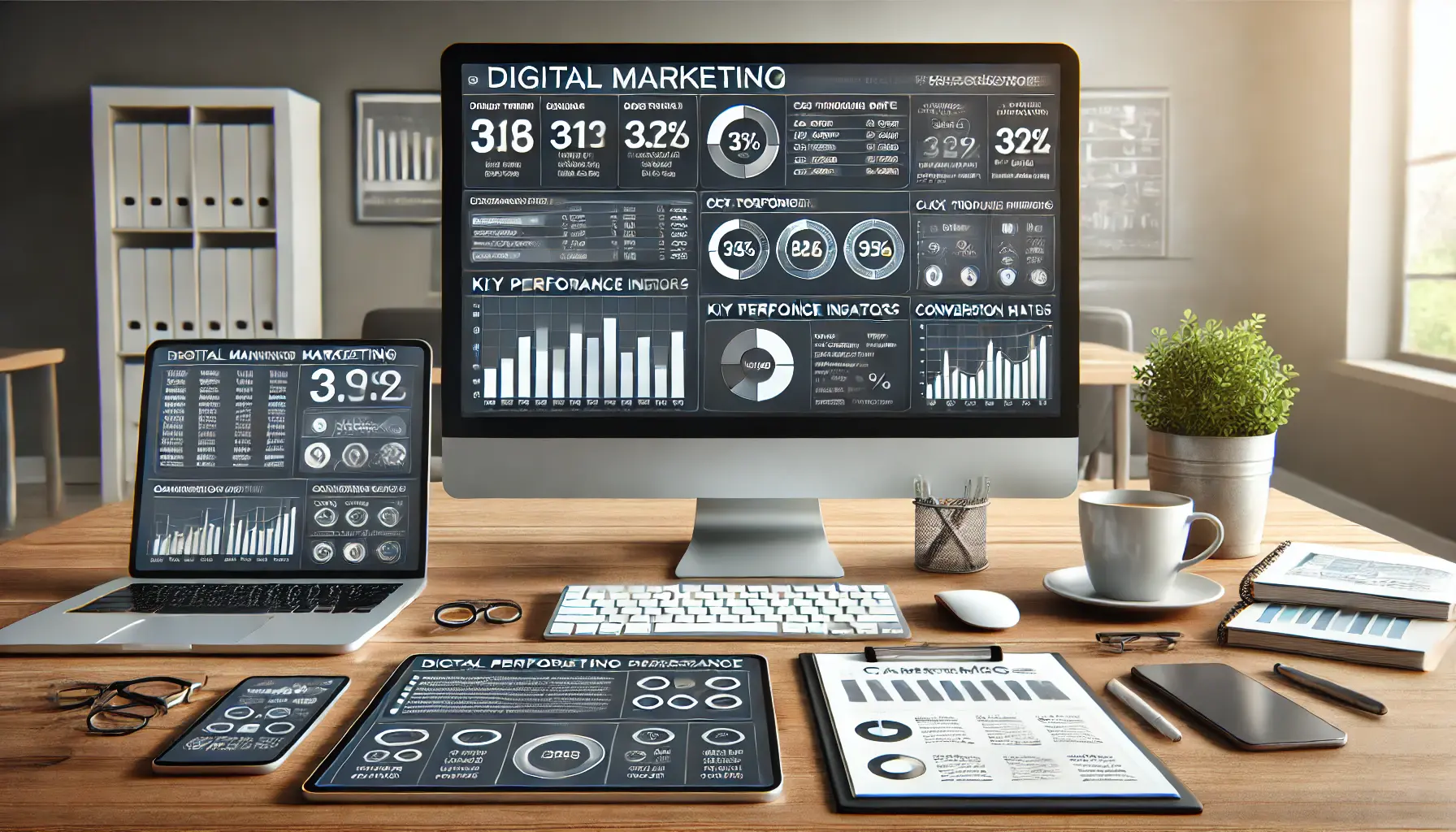
Workspace dedicated to measuring and analyzing campaign performance with key metrics.
Measuring and Analyzing Campaign Performance
Measuring and analyzing the performance of your Google Ads campaigns is crucial for understanding their effectiveness and identifying areas for improvement.
Google Ads provides a wealth of data and analytics that can help you track key performance indicators (KPIs) like click-through rates (CTR), conversion rates, and return on ad spend (ROAS).
Regularly reviewing these metrics allows you to make data-driven decisions and optimize your campaigns for better results.
This might involve adjusting your targeting, refining your ad copy, or reallocating your budget to the most effective campaigns.
- Tracking key performance indicators like CTR, conversion rate, and ROAS.
- Using Google Ads analytics to gain insights into campaign performance.
- Making data-driven decisions to optimize your campaigns for better results.

Workspace focused on integrating artificial intelligence in Google Ads for optimization and performance analysis.
Embracing the Power of Artificial Intelligence in Google Ads
Artificial Intelligence (AI) has revolutionized the way Google Ads operates, offering unprecedented opportunities for optimizing campaigns.
AI in Google Ads helps in predictive analysis, audience targeting, and ad performance optimization.
By harnessing the power of AI, advertisers can make more informed decisions, automate complex processes, and achieve better outcomes with their ad campaigns.
AI-driven tools in Google Ads, such as responsive search ads and automated bidding strategies, allow for dynamic adaptation of ad content and bidding based on real-time data.
This leads to more effective and efficient campaigns, as ads are continuously optimized for the highest possible performance.
- Leveraging AI-driven tools like responsive search ads for dynamic ad content optimization.
- Using automated bidding strategies to optimize bids in real-time based on campaign performance.
- Employing predictive analytics to forecast campaign outcomes and make proactive adjustments.
Note: Embracing AI in Google Ads can significantly enhance campaign efficiency and effectiveness, leading to better ROI and reduced manual workload.

Workspace focused on optimizing landing pages for better conversion rates and user experience.
Optimizing Landing Pages for Higher Conversion Rates
The effectiveness of your Google Ads campaign is not only determined by the ad itself but also by the quality of the landing page it directs to.
A well-optimized landing page that aligns with the ad’s message and offers a seamless user experience is crucial for converting clicks into actions.
This involves having a clear and compelling headline, relevant and engaging content, and a strong call-to-action.
Additionally, ensuring that your landing page is fast-loading and mobile-friendly is essential, as these factors significantly impact user experience and, consequently, conversion rates.
Regular testing and optimization of landing pages based on user feedback and performance data can lead to continuous improvement in campaign effectiveness.
- Designing landing pages that align with the ad’s message and user expectations.
- Ensuring fast loading times and mobile-friendliness for optimal user experience.
- Conducting A/B testing to identify the most effective elements of your landing pages.

Workspace exploring advanced ad formats and features for effective digital advertising.
Exploring Advanced Ad Formats and Features
Google Ads offers a variety of advanced ad formats and features that can be leveraged to enhance campaign performance.
These include formats like display ads, shopping ads, and app promotion ads, each catering to different campaign objectives and audience preferences.
By exploring these advanced formats, advertisers can find new ways to engage with their audience and drive desired actions.
Additionally, features like ad customizers, which allow for dynamic insertion of content based on user context, and audience insights, which provide detailed information about the audience’s interests and behaviors, can be used to create more personalized and effective ad experiences.
- Experimenting with different ad formats like display, shopping, and app promotion ads.
- Using ad customizers for dynamic content insertion based on user context.
- Utilizing audience insights to gain a deeper understanding of your target audience.
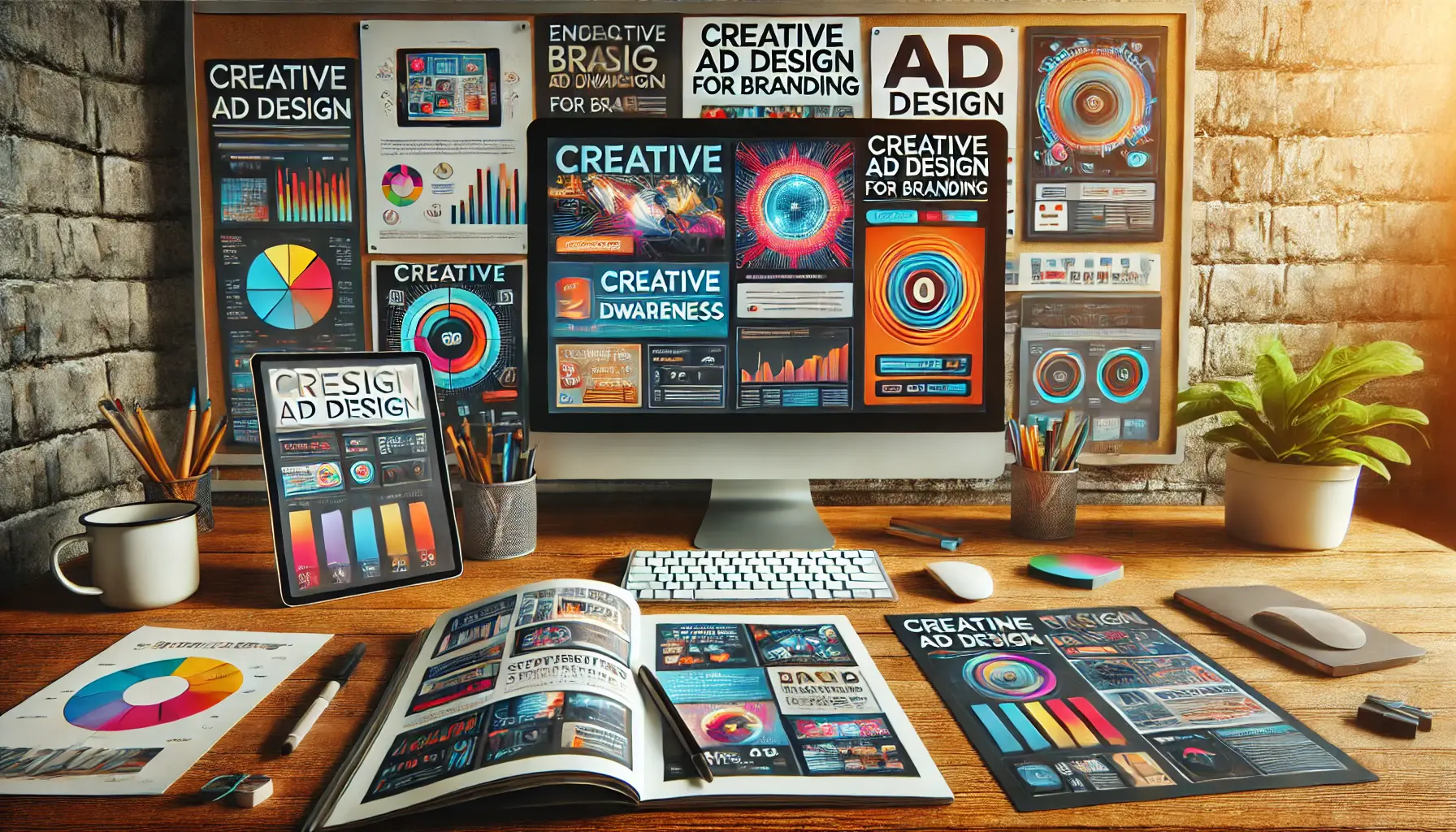
Workspace focused on enhancing brand awareness through creative ad design and strategic branding.
Enhancing Brand Awareness Through Creative Ad Design
Creative design in Google Ads plays a pivotal role in enhancing brand awareness.
The visual appeal of your ads, along with the message they convey, can significantly impact how your brand is perceived by the audience.
Utilizing high-quality images, engaging graphics, and a consistent color scheme that aligns with your brand identity helps in creating memorable ads that stand out in the crowded digital space.
Moreover, incorporating elements of your brand, such as logos and taglines, in a creative and subtle way within your ads can reinforce brand recognition.
The goal is to design ads that not only attract attention but also resonate with the audience, leaving a lasting impression of your brand.
- Using high-quality, visually appealing images and graphics in your ads.
- Maintaining a consistent brand color scheme and style across all ads.
- Incorporating brand elements like logos and taglines creatively.
Featured: Creative ad design is crucial in making your brand memorable and enhancing its visibility in the digital landscape.

Workspace focused on strategically using keywords for maximum impact in digital marketing campaigns.
Strategically Using Keywords for Maximum Impact
Keywords are the foundation of any Google Ads campaign, and their strategic use can greatly impact the campaign’s success.
It’s essential to conduct thorough keyword research to identify terms that are not only relevant to your business but also have a high search volume and low competition.
This helps in reaching your target audience more effectively and improving your ad’s visibility.
Additionally, using a mix of broad, phrase, and exact match keywords allows for greater flexibility and reach.
Regularly updating and refining your keyword list based on performance data ensures that your campaign remains relevant and effective over time.
- Conducting comprehensive keyword research to identify relevant and high-performing keywords.
- Using a mix of keyword match types for broader reach and targeting precision.
- Regularly updating your keyword list based on performance analytics.
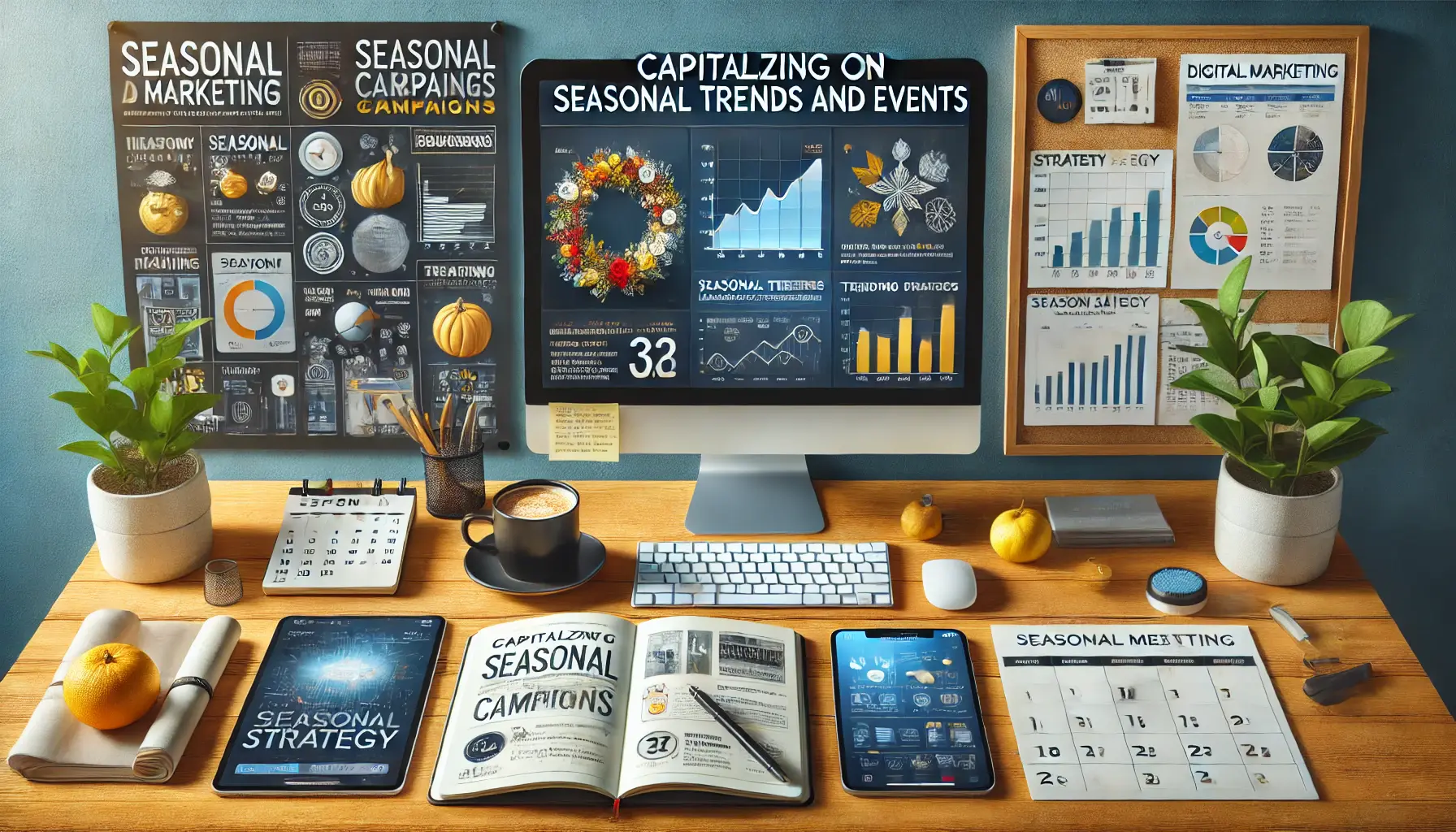
Workspace focusing on capitalizing on seasonal trends and events for marketing success.
Capitalizing on Seasonal Trends and Events
Seasonal trends and events present unique opportunities for boosting brand awareness through Google Ads.
By tailoring your ads to align with seasonal events, holidays, or trending topics, you can tap into the increased search and engagement that occurs during these times.
This approach allows for more timely and relevant ad content, which can resonate more deeply with the audience.
Planning your campaigns in advance for major holidays or events and using seasonal keywords and themes in your ads can significantly enhance their effectiveness.
This strategy not only increases visibility but also demonstrates your brand’s relevance and connection to current trends and customer interests.
- Planning campaigns around major holidays, events, and seasonal trends.
- Incorporating seasonal keywords and themes into your ad content.
- Aligning your ad strategy with current trends to increase relevance and engagement.

Workspace focused on mastering ad scheduling and strategic budget allocation for ad campaigns.
Mastering the Art of Ad Scheduling and Budget Allocation
Effective ad scheduling and budget allocation are crucial components of a successful Google Ads campaign.
Mastering these aspects ensures that your ads are displayed at the most opportune times and that your budget is utilized in the most efficient manner.
Ad scheduling allows you to target specific times of the day or days of the week when your audience is most active, thereby increasing the chances of your ads being seen and interacted with.
Budget allocation, on the other hand, involves strategically distributing your ad spend across various campaigns and ad groups based on their performance and potential.
This not only maximizes ROI but also ensures that your best-performing ads receive the majority of the budget.
- Setting up ad schedules to target peak times when your audience is most active.
- Allocating budget based on campaign performance and potential ROI.
- Continuously monitoring and adjusting schedules and budgets for optimal results.
False Information: Neglecting ad scheduling and budget allocation can lead to inefficient use of resources and missed opportunities in Google Ads campaigns.
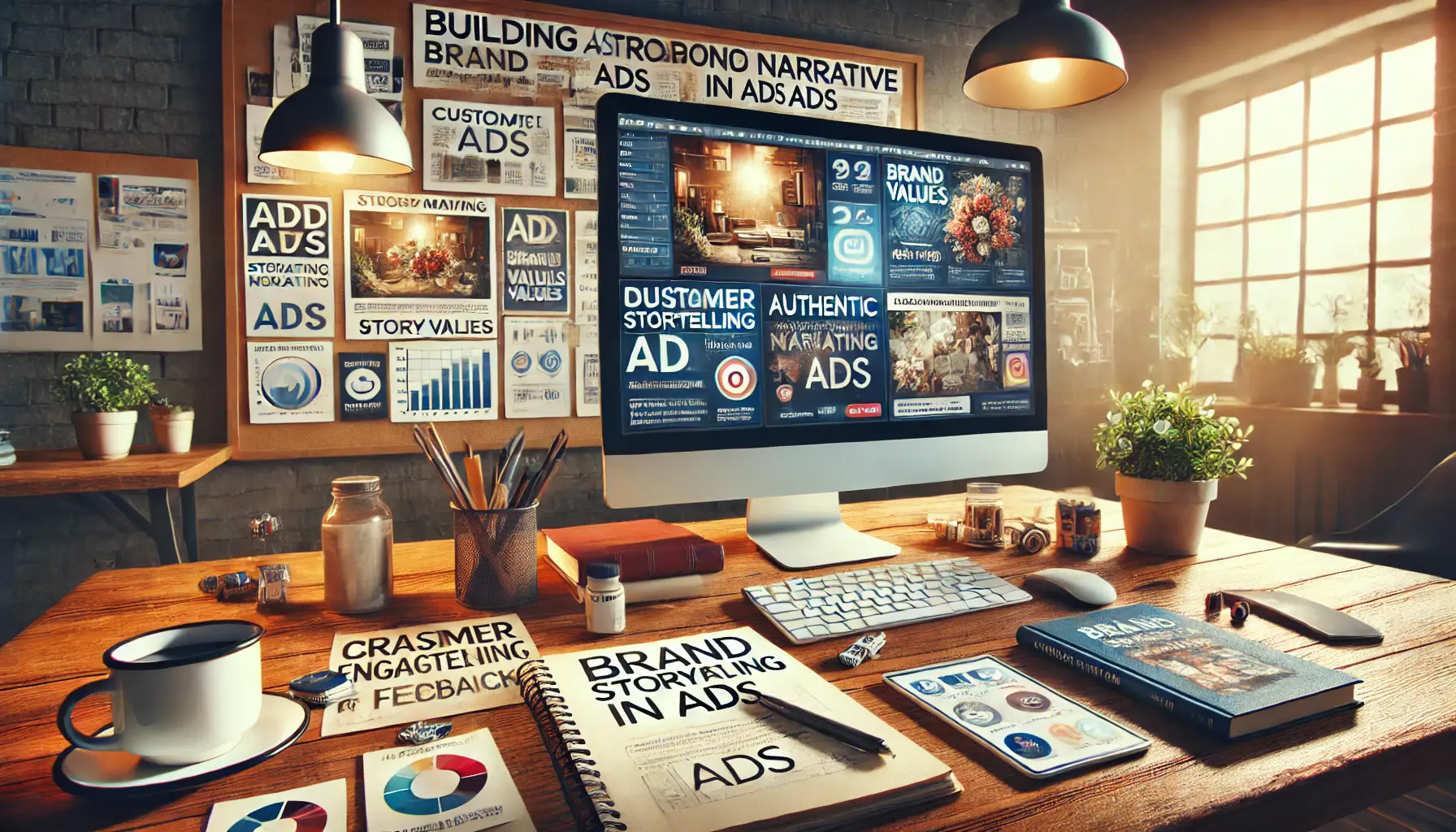
Workspace focused on building a strong brand narrative through storytelling in ads.
Building a Strong Brand Narrative in Your Ads
A strong brand narrative in your Google Ads can significantly enhance brand awareness and connection with your audience.
Storytelling in ads helps in creating an emotional connection with the audience, making your brand more memorable and relatable.
Your ads should not just sell a product or service but should convey the values, mission, and essence of your brand.
Creating a narrative that resonates with your audience’s needs, aspirations, and values can lead to higher engagement and brand loyalty.
This involves understanding your audience deeply and crafting messages that speak directly to their experiences and desires.
- Crafting ads that tell a story and convey your brand’s values and mission.
- Creating narratives that resonate with your audience’s needs and aspirations.
- Using storytelling to build emotional connections and brand loyalty.

Workspace emphasizing continuous learning and adaptation in the dynamic digital marketing landscape.
Staying Ahead with Continuous Learning and Adaptation
The digital advertising landscape, especially Google Ads, is constantly evolving.
Staying ahead in this dynamic environment requires continuous learning and adaptation.
Keeping up-to-date with the latest trends, algorithm updates, and best practices in Google Ads is essential for maintaining the effectiveness of your campaigns.
Regularly experimenting with new features, testing different strategies, and learning from both successes and failures can lead to continuous improvement and innovation in your campaigns.
Embracing a mindset of ongoing learning and adaptation is key to staying competitive and achieving long-term success in Google Ads.
- Keeping up-to-date with the latest trends and updates in Google Ads.
- Experimenting with new features and strategies to find what works best.
- Learning from both successes and failures for continuous campaign improvement.
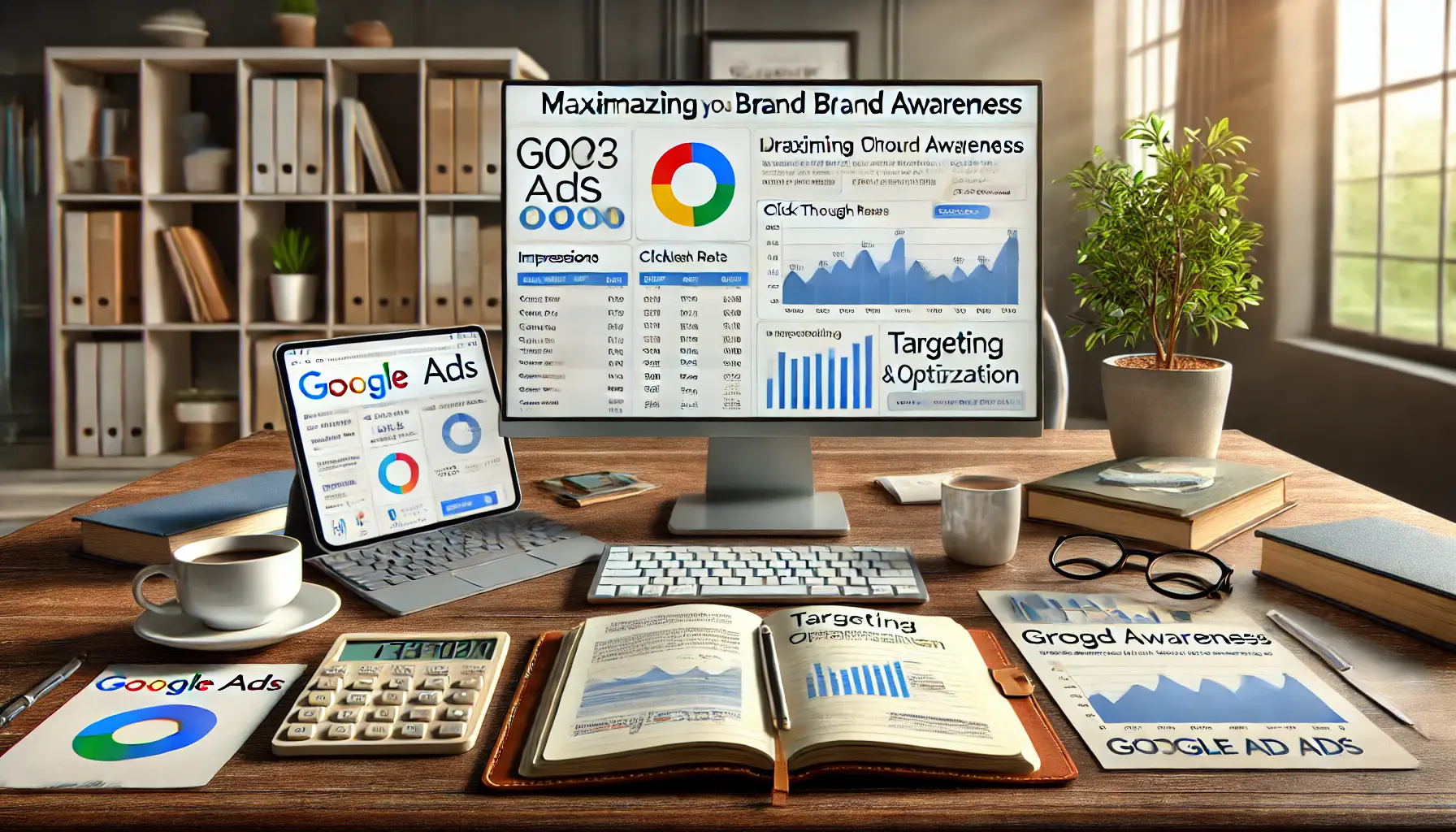
Workspace focused on maximizing brand awareness through strategic Google Ads implementation and data-driven decisions.
Maximizing Brand Awareness with Strategic Google Ads Implementation
In conclusion, effectively boosting awareness with Google Ads requires a multifaceted approach, blending creativity with strategic planning.
The journey to enhancing brand visibility in the digital realm is not just about launching ads but about crafting a narrative that resonates with your audience, understanding their behaviors, and leveraging the latest technological advancements in advertising.
From the precision of targeting and creative ad design to the integration of AI and continuous learning, each aspect plays a pivotal role in shaping the success of your Google Ads campaigns.
The key lies in not just reaching the audience but in making a lasting impression that elevates your brand above the competition.

Workspace focusing on key takeaways for optimizing and refining Google Ads campaigns.
Key Takeaways for Effective Google Ads Campaigns
- Deep audience understanding for targeted advertising.
- Creative and engaging ad content that tells your brand’s story.
- Smart use of AI and machine learning for optimized ad performance.
- Continuous adaptation and learning to stay ahead in the dynamic digital advertising landscape.
Ultimately, the goal of any Google Ads campaign should be to not only increase visibility but to build a connection with the audience that fosters trust and loyalty.
By implementing these strategies, businesses can effectively boost awareness and create a strong, lasting impact in the minds of their consumers.
Remember, the journey of enhancing brand awareness with Google Ads is ongoing.
It requires patience, experimentation, and a willingness to adapt.
With these strategies in hand, you are well-equipped to navigate the complexities of digital advertising and achieve the brand recognition your business deserves.
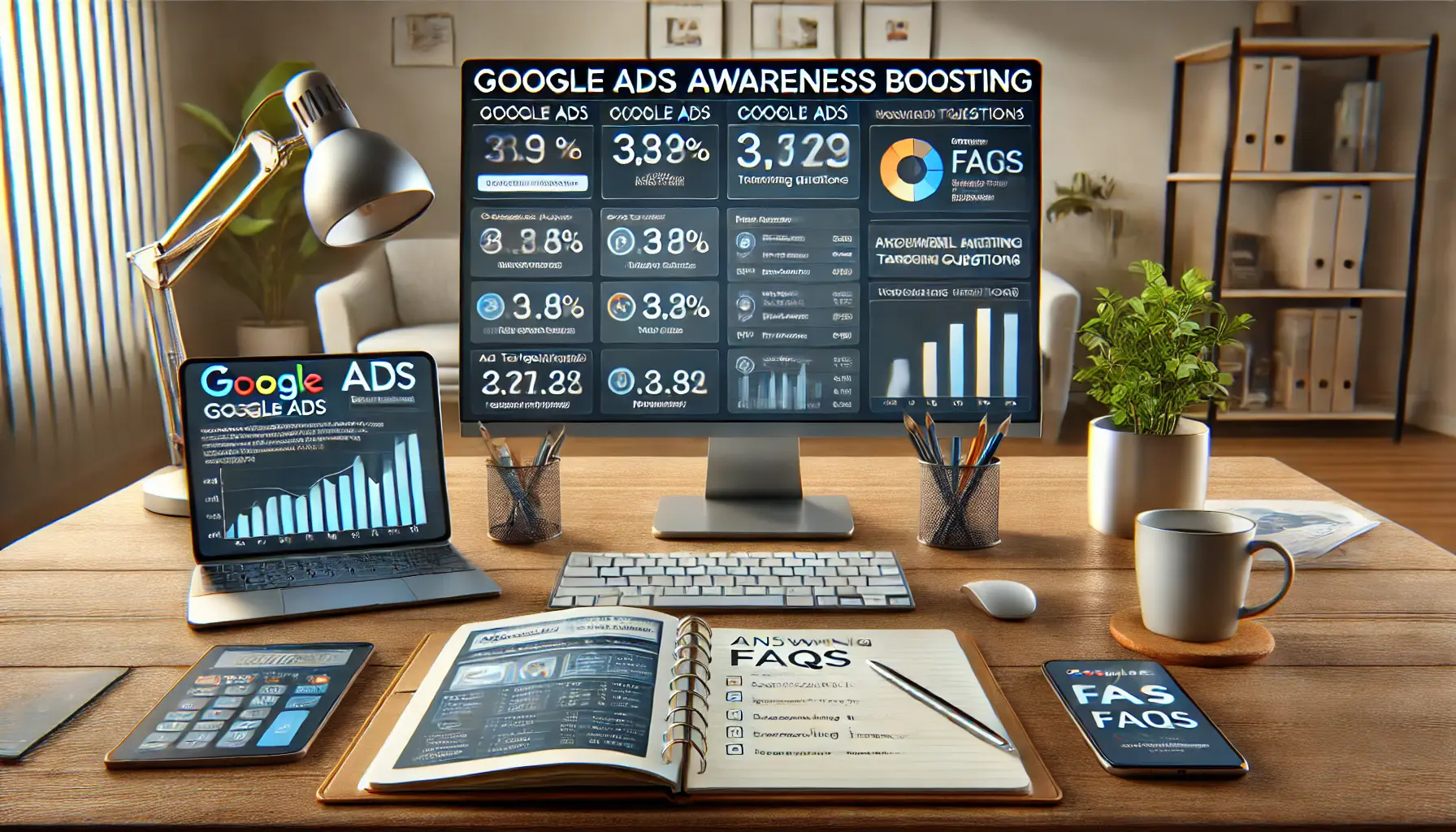
Workspace focused on boosting awareness through Google Ads, with an emphasis on answering frequently asked questions.
Your campaigns can be managed by an agency specialized in Google Ads, check out our service page.
Google Ads Awareness Boosting FAQs
Discover essential insights into enhancing brand visibility and engagement through Google Ads with these frequently asked questions.
Google Ads boosts brand awareness by placing your ads in front of a targeted audience, leveraging search, display, and video platforms to maximize visibility and engagement.
Key strategies include precise audience targeting, engaging ad content, smart use of AI for optimization, and integrating ads with other marketing channels.
Yes, Google Ads offers advanced targeting options, allowing you to reach specific demographics based on interests, behaviors, and search patterns.
Video ads are highly effective in Google Ads, offering engaging content that increases visibility and creates memorable brand experiences.
AI in Google Ads enhances campaign efficiency through predictive analysis, automated bidding, and dynamic ad content optimization.
Mobile optimization is crucial, involving the creation of mobile-friendly ads that cater to the behavior and preferences of mobile users.
Local campaigns target nearby audiences, effectively increasing in-store visits and local brand awareness through precise geographic targeting.
Ad scheduling in Google Ads ensures your ads are displayed at optimal times, increasing the likelihood of engagement and maximizing budget efficiency.
